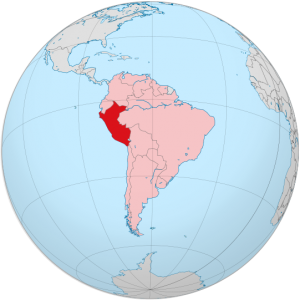NewsDesk @bactiman63
The Ministry of Health (Minsa) , through the National Center for Epidemiology, Disease Prevention and Control (CDC Peru) issues an epidemiological alert on the occurrence of outbreaks of hand, foot and mouth disease (HFMD) in the country due to high risk extension of cases and increase in the magnitude of existing outbreaks.

The CDC Peru reported that since March 30, 2022 (epidemiological week 13), outbreaks related to hand-foot-and-mouth disease have been reported in four regions of Peru: Ucayali (120 reported cases), San Martin ( 15 reported cases), Huánuco (9 reported cases) and Amazonas (21 reported cases).
HFMD is caused by a group of enteroviruses, of which coxsackie A16 and enterovirus-71 stand out, although coxsackie A6 and coxsackie A10 have recently been added.
The CDC Peru detailed that this hand, foot and mouth disease is viral and contagious, and mainly affects children under 5 to 7 years of age, and could occur exceptionally in adults. In addition, its name is descriptive for presenting fever, mouth ulcers and exanthema (maculopapular and/or vesicular rash on the hands, feet and buttock folds). Even with flu-like symptoms such as malaise, sore throat, nasal congestion, among others.
Likewise, CDC Peru added that hand, foot and mouth disease is usually benign, but very contagious at the level of spread within schools and child care centers, and that the disease generally occurs in the form of outbreaks in the seasons of summer and autumn.
- Constantly wash hands with soap and water for at least 20 seconds and help children wash their hands after going to the bathroom, coughing and sneezing.
- Avoid touching your eyes, nose and mouth, as this is a likely route of infection.
- Clean and disinfect surfaces such as door handles and children’s toys.
- Avoid contact with infected people and sharing personal items, including cutlery and dishes.
- Isolate the cases identified in the home (from the date of onset of symptoms until their remission in 7 to 10 days).
- When a case is identified in the educational institution at the initial or lower level, the classroom involved must be quarantined and if contacts with relatives (siblings, cousins) are identified in other classrooms, the investigation must be expanded and the relevance evaluated. from quarantine.
- Classroom quarantine will be indicated for a period similar to isolation (up to 10 days) and in the absence of new probable cases.
- Faced with cases presented in closed populations, these must be immediately reported to the health establishment of the jurisdiction.
- The DIRESAS, GERESAS and DIRIS, in coordination with health promotion and communications, must disseminate promotional preventive measures with emphasis on places with overcrowding such as educational institutions, shelters, among others.
Related:
- Venezuela reports nearly 2800 malaria cases early in 2022, Most cases reported where mining is reported
- Sweden warns of tick-borne encephalitis after reporting a record year in 2021
- Salmonella potential prompts recall of Kinder chocolate
- Japan: H5N1 avian influenza detected in raccoon dog (tanuki) in Sapporo, Hokkaido
- Philippines: Dengue, measles down by half in early 2022
- Rabies death reported in Petaling, Selangor state, Malaysia
- Mycobacterium abscessus infections linked to plastic surgeries performed in Paraguay

